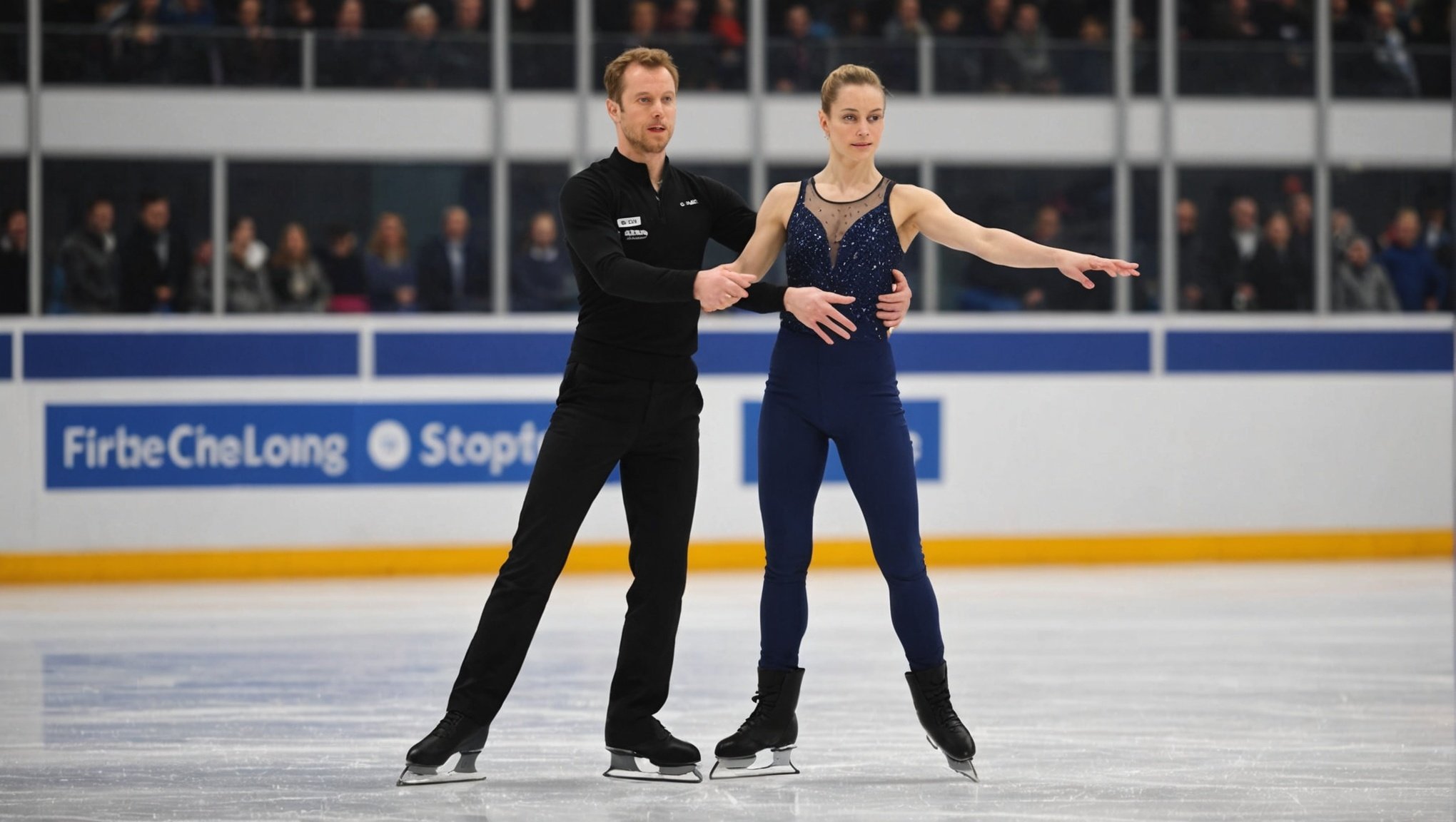Importance of Balance and Poise in Figure Skating
Balance and poise are fundamental components in figure skating performance. They are crucial in executing techniques flawlessly, which can mean the difference between a graceful glide and a stumble. Balance, in this context, refers to a skater’s ability to maintain control over their body’s center of gravity during routines. It’s essential for the execution of jumps, spins, and complex footwork.
Role in Techniques
Achieving remarkable poise allows skaters to perform intricate elements with elegance. They must distribute their weight effectively across the blade to ensure stability. This skill is vital for executing moves such as the double axel or the flying camel spin with precision.
Additional reading : Essential Strategies to Combat Burnout Among Professional Esports Gamers in the UK
Impact on Scoring
Judges closely observe the balance and poise of figure skaters, as imperfections can significantly affect scoring. Skaters with flawless control and fluid movements often receive higher marks, reflecting the importance of maintaining equilibrium throughout a performance.
Consistency and Impressions
Consistency in balance and poise enhances overall performance, making routines appear seamless. This steadiness not only impresses judges but also captivates the audience, showcasing the skater’s technical prowess and artistic grace. Balance, consequently, forms the bedrock of successful and compelling figure skating displays.
Also to see : Enhancing Sand Court Mastery: Tips for UK Beach Volleyball Athletes
Techniques to Improve Balance
Enhancing your balance starts with mastering Balance Techniques that focus on Body Alignment and Strength Training. Understanding these fundamentals can transform movements and enhance performance effectively.
Core Strength Exercises
Core strength is crucial for maintaining balance. By incorporating exercises such as planks, Russian twists, and leg raises, you ensure a solid foundation that supports every movement. These exercises not only enhance stability but also improve posture and reduce the risk of injury by strengthening the muscles around your spine.
Proprioception and Spatial Awareness
Another vital component is developing Proprioception and Spatial Awareness. Focusing on drills like single-leg stands and balance board exercises can ignite those sensory receptors that understand body positioning in space. This aspect is especially beneficial for sports involving quick direction changes, improving reaction times and preventing falls.
Footwork Drills
Footwork agility is the cornerstone of dynamic Body Alignment. Engaging in footwork drills, such as ladder exercises and cone drills, enhances agility and quickens transitions. These drills help in fine-tuning movements, promoting swift foot changes essential for effective maneuvering. Emphasizing footwork not only boosts balance but also increases overall movement efficiency, aiding in smooth transitions and better control.
Strategies for Enhancing Poise
Enhancing poise is essential for improved performance and reduced anxiety during pivotal moments. Focusing on poise enhancement involves cultivating mental focus and managing performance anxiety effectively. Below, we explore techniques to maintain composure and stay centred even under pressure.
Visualization Techniques
Harnessing mental focus can significantly reduce performance anxiety. Visualization techniques involve creating vivid mental images of success. For example, athletes often imagine themselves executing a winning performance. This mental rehearsal fosters self-confidence and focuses energy on positive outcomes. To employ this technique, dedicate a few minutes daily to visualizing smooth, successful endeavours.
Breathing Exercises
Regulating breathing is a practical solution to combat anxiety and sharpen concentration. Calm and controlled breathing sends calming signals to the brain. Simple techniques, such as the 4-7-8 method, can prove beneficial. Inhale quietly through the nose for 4 seconds, hold the breath for 7 seconds, and exhale completely for 8 seconds. Practising these exercises consistently enhances both poise and clarity of thought.
Practicing Calmness Under Pressure
Remaining calm ensures mental focus during crucial events. Building resilience under pressure involves training the mind to manage stress effectively. Techniques like mindfulness meditation help in achieving presence and awareness, creating a buffer against anxiety. By adopting these methods, individuals cultivate the ability to stay composed and maintain peak performance, even during intense scenarios.
Insights from Experienced Skaters and Coaches
Drawing from skater experiences and insights shared by seasoned competitors, UK figure skaters often stress the importance of perseverance as a key element in their success. They highlight the transformative power of embracing failures as learning experiences, encouraging newcomers to maintain a positive outlook.
Coaches emphasize strategies for teaching balance and poise, which form the foundation of effective figure skating. A commonly suggested technique involves integrating core strength exercises into training regimens, as building core strength greatly enhances a skater’s balance. Coaches also advocate for practising mindfulness to help skaters maintain mental clarity and composure during performances.
Addressing the common challenges faced by skaters, experienced athletes note that managing nerves and dealing with performance pressure are significant hurdles. To overcome these, many recommend visualising successful performances and maintaining a consistent practice routine. Mutually supportive practice groups can also provide valuable encouragement and feedback, making daunting challenges feel more manageable.
To achieve performance insights and continuous improvement, coaches advise setting realistic goals and tracking progress meticulously. This approach not only enhances motivation but also ensures skaters are aware of their development, enabling them to focus their efforts on areas needing improvement.
Mental Resilience in Competitive Settings
In the world of competition, mental resilience is a crucial asset. It helps athletes sustain performance and recover swiftly from setbacks. Developing a competitive mindset requires attention to psychological aspects that sustain focus and enhance endurance.
Developing a Positive Mindset
Building a positive mindset involves cultivating optimism and self-belief. In sports psychology, practising positive self-talk and visualisation are key techniques. This approach helps athletes maintain motivation. Encouraging thoughts and vivid visualisation of success create a solid foundation for resilience.
Handling Competition Pressure
Athletes frequently face competitive anxiety. Managing this pressure involves identifying triggers and employing effective strategies to remain calm. Techniques such as deep breathing and mindfulness allow individuals to regain focus quickly. Sports psychologists recommend setting realistic goals to bolster confidence and minimise stress.
Overcoming Setbacks and Failures
Setbacks are inevitable, yet they offer valuable lessons. Adopting a growth mindset encourages learning from failures. This perspective fosters resilience and adaptability. Recovery strategies such as self-reflection and support systems enable athletes to bounce back stronger. Understanding past experiences and identifying areas of improvement are pillars of mental robustness in competitive environments.
Real-World Applications and Case Studies
Understanding real-world applications of performance training is crucial for success in competitive skating. In UK competitions, case studies reveal that the link between balance and poise can significantly affect outcomes. Athletes with well-honed balance maintain composure under pressure. This allows them to deliver clean performances, reducing errors and maximising their score potential.
Performance analysis often highlights the critical difference between top contenders and others. Skating judges keenly observe poise, which showcases a skater’s control and elegance. An athlete’s ability to adjust mid-performance demonstrates both physical and mental agility, contributing to positive scorer acknowledgment.
Elite skaters commit to rigorous training regimens that target these core competencies. Their routines typically include balance exercises, which integrate yoga and pilates to improve stability. Additionally, weight and resistance training enhance core strength, further promoting control. These regimens are not just physical but also involve mental conditioning.
One successful skater remarked on her regimen: “Incorporating mixed training boosts overall performance and confidence.” Such testimonies underline the proven importance of varied exercises for elevating skill levels in real-world competition scenarios. Building these competencies through targeted training is vital for athletes aiming to excel in high-stakes competition.


















